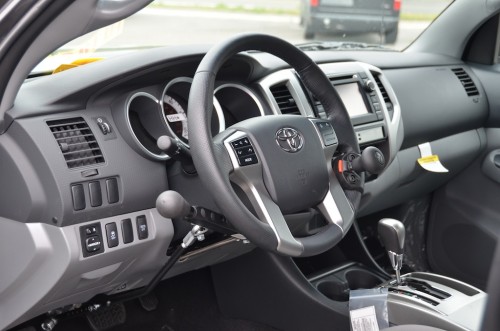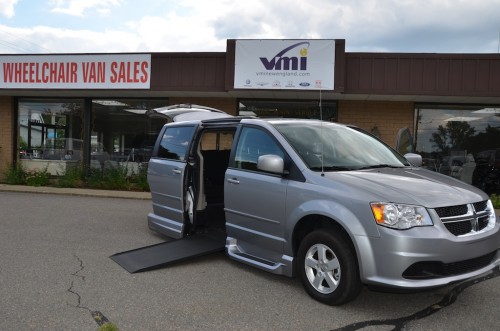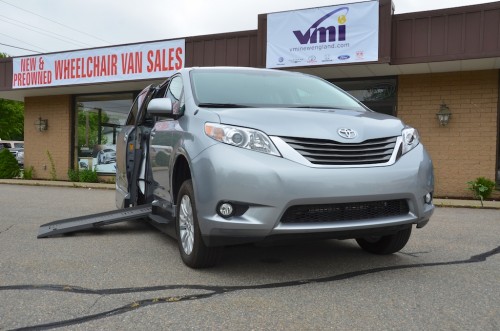For some people, an automobile is a necessity not a luxury.
To have a full life in America requires mobility -not just the ability to walk or run, but the ability to travel greater distances with more convenience and flexibility than public transportation provides.
For many lower-limb amputees, however, the lack of feet makes driving impossible in a conventionally equipped vehicle. Hand controls along with left foot gas pedals provide the solution. They make it possible for lower-limb amputees and people with other disabilities to enjoy the prosperity and independence that comes with vehicle ownership and use.
Different types of hand controls
Basic hand controls usually consist of a lever attached to a bracket and mounted under the steering column on cars equipped with automatic transmissions. The lever is moved to operate throttle and brakes. Usually the left hand operates the control, allowing the right hand to steer and operate the vehicle’s accessories. The three most common types of hand controls are push/rock, push/twist, right angle pull, and push/pull.
The push rock and push twist hand control works by twisting the handle to apply the gas and pushing it to apply the brakes. The right angle pull hand control works by moving the lever down towards the driver’s lap for acceleration. To apply the brakes, the driver pushes the handle forward towards the front of the car. The push/pull hand control works by pulling on the handle to apply the gas, and pushing for the brakes. Most hand controls, except for a very few, apply the brakes by pushing.
Most hand controls are hand-powered, using linkages or cables to operate the gas and brakes. Some models are power-assisted to make it easier on the hand and arm. Cars are designed for the driver’s foot to operate the gas and brake, so the force required to operate the hand control can be tiring to the hand during long drives. Power-assist options for hand controls range from very complex devices such as an electric joystick, to relatively simple ones that use vacuum power like power brakes. Most hand controls are dual-action devices that permit the simultaneous application of throttle and brake. Dual-action controls are helpful when the car is stopped on a steep hill or when making tight maneuvers on steep grades. The throttle can be applied a little before releasing the brake to prevent the car from coasting backward before moving forward. While most users prefer dual-action, some prefer single-action units because they eliminate the chance of accidentally applying the throttle during braking.
Which is best for you?
The best choice of hand controls for a person depends on a number of factors, such as the car’s layout, expected driving conditions, and the driver’s size, disability, and preference.
Push/twist
Push/twist hand controls are a good choice if either a large driver, a small car, or both, limit space. Economical use of space is achieved because the lever only needs to be moved to apply the brake. Throttle control is achieved by twisting the grip in the same manner as operating a motorcycle.
Push/twist controls provide a precise, sporty feel. By necessity, push/twist hand controls are often power-assisted. Without power-assistance, the twisting motion tends to feel stiff, and the hand tires. With a good quality power-assisted twist control, very little effort is required to maintain a throttle setting; simply resting the hand on the handle should provide enough force. This results in less fatigue on long drives.
Push/twist controls are good in tight turns and on rough roads. Throttle surges, which can be experienced with a push/pull or right angle pull device, as the driver and his or her arm bumps, sways, leans, or lurches going through curves and over bumps tend not to occur with a push/twist. Most push/twist controls are dual-action units.
These controls are not recommended for people with grip problems or those with amputated fingers or hands. Good left-hand dexterity is required for safe driving with push/ twist controls.
Right angle pull
Right angle pull controls are the most widely used form of hand control. They are relatively inexpensive and, usually, easy to install and adjust. Operation is simple and intuitive for these strictly mechanical units.
Space, however, can be a problem. Throttle application requires that the lever be moved down toward the driver’s lap. If the driver is large or the car is small, a push/twist or even a push/pull control may be more suitable. Because the lever is connected to the gas pedal with mechanical linkages, the underside of the dashboard will often require trimming.
For those missing fingers, hands, or with reduced grip strength, various handles, wrist straps, grips, etc., can be adapted for the right angle pull control. Specialized handles can be configured for use with a prosthesis. Right angle pull controls are usually dual-action, but also can be single-action.
Push/pull
Push/pull hand controls are by definition single-action. Since the lever is pulled for gas and pushed for brakes, the gas and brakes can never be operated at the same time.
This is the easiest hand control to learn to use. Senior citizens like the push/pull because there is no confusion when learning, after using the foot pedals all their lives. Power-assisted and non-power-assisted models are available. The driver’s hand can rest directly on the lever without causing the throttle to surge.
As with the right angle pull control, different handles can be adapted to the driver to permit safe and easy operation. Power-assisted push/pull hand controls equipped with handle adaptations are recommended for people with limited arm strength and poor manual dexterity.
Some other factors to consider
When shopping for hand controls, aesthetics is also a factor to consider. Car owners can be surprised to find that a section of the dashboard was cut away during the installation process. Most hand controls are mounted under the dash with a support extending into the driver space under the steering column where the lever is connected. A panel under the dashboard is removed during installation. If the hand control’s design and the dashboard layout permit, the panel can be returned allowing the mounting bracket to be hidden. Sometimes, however, the hand control’s hardware protrudes into the passenger space, and the panel cannot be reinstalled without cutting a window in it. Each installation varies with the model of automobile and the particular hand-control unit. Check with your dealer about what you can expect to see when you get your car back.
Many of us share cars with other family members. It is important that the pedals can still be used with the hand control installed and that there are as few impediments to using them as possible. Most good controls provide room for a pedal-pushing driver. Ask the installer what to expect.
Driving should be fun. Poorly designed hand controls, or a badly performed installation, can cause the driver to be distracted or preoccupied with the control, lead to frustration, and reduce safety. Good hand controls, professionally installed, will allow enjoyable, safe driving.
Installation
No matter what type of hand controls you use, you are making a significant modification to your vehicle. It is, therefore, important to have a trained and qualified person perform the installation.
The installer should cut a minimum amount of the dashboard. The handle should be located in a comfortable position so that the driver can hold on to the hand control and hook a thumb over the steering wheel. This position helps to stabilize the steering wheel and the throttle. The whole assembly should feel solid and sturdy. If the installation is done properly using a high-quality control, driving will be easy and fun.
Everyone is different, and each person is a special case. If you are uncertain about your condition and your abilities, consult a Certified Driving Rehabilitation Specialist (CDRS). A CDRS knows about different disabilities and can advise you about the best solution to your driving needs. Contact a CDRS through your rehabilitation facility or through your local amputee support group.
Whether you are a first-time buyer or already drive with hand controls, it is good to know what is out there and what to look for. High-quality hand controls are available, as are skilled mobility technicians who understand the quality and safety issues involved with their installation.
Spend a few extra dollars to purchase a high-quality product and have it professionally installed. You already have made a significant investment in your vehicle. A quality set of hand controls will surely enhance your driving experience and, above all, your safety.



